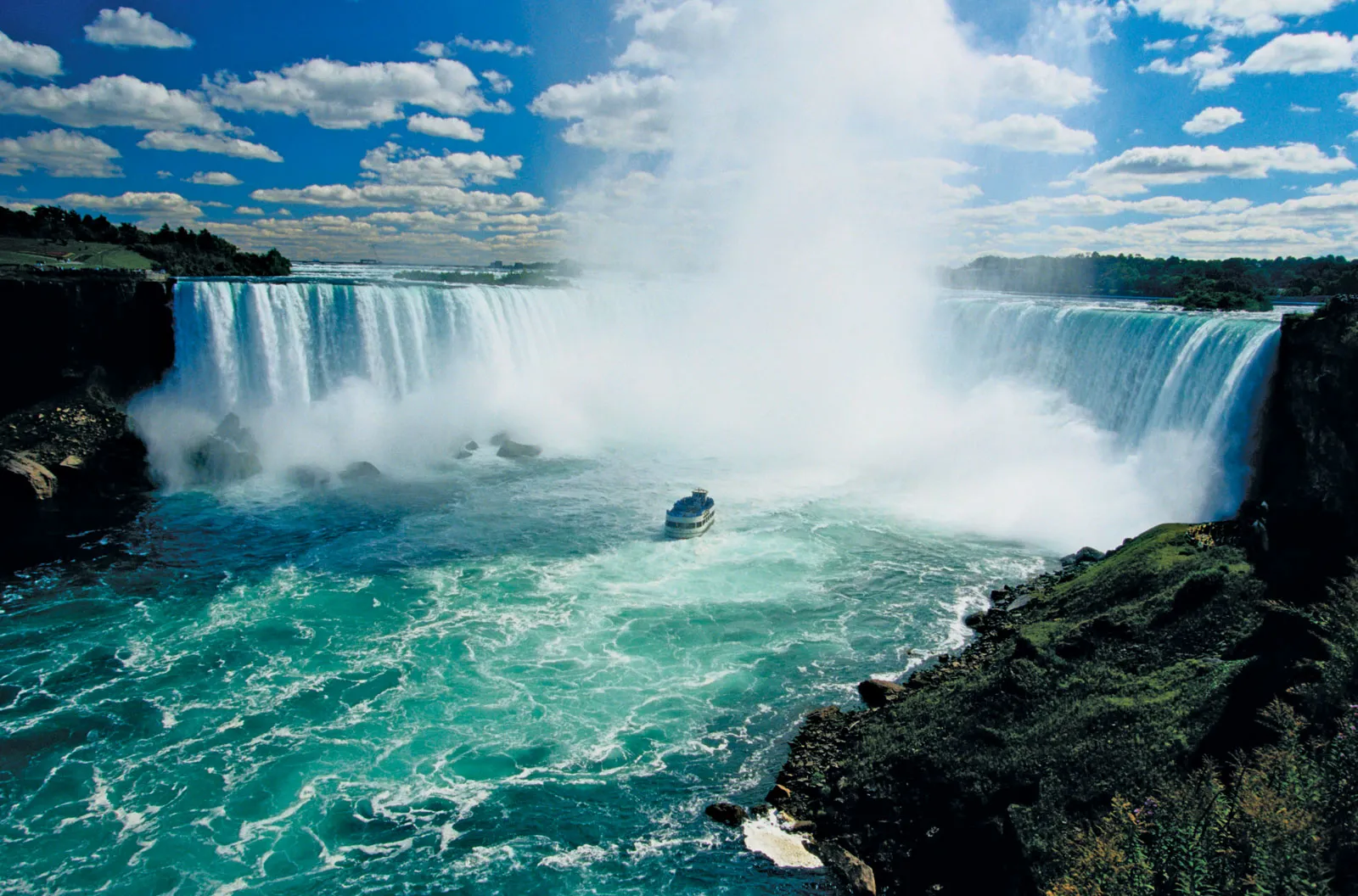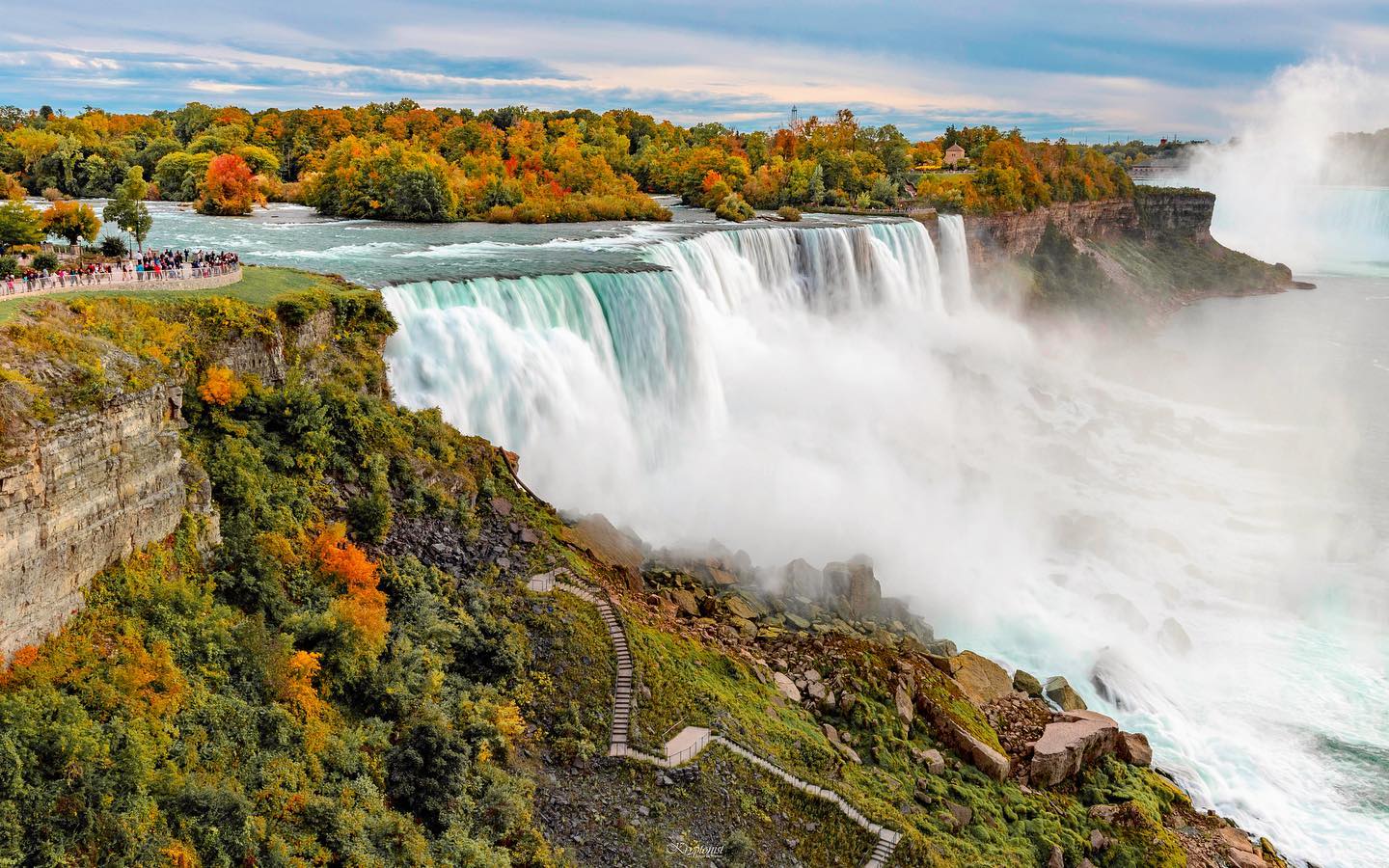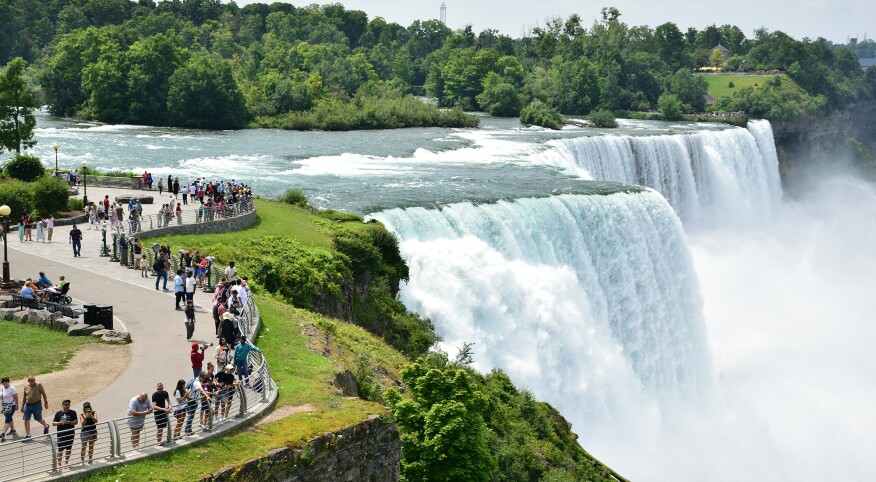Introduction
Niagara Falls, located on the border between the United States and Canada, is one of the most breathtaking natural wonders in the world. The American side of the falls lies in Niagara Falls, New York, within the Niagara Falls State Park, which is the oldest state park in the USA. Known for its immense beauty and power, Niagara Falls attracts millions of visitors every year, offering a perfect blend of natural scenery, adventure, and history.
The Geography of Niagara Falls
Niagara Falls is made up of three separate waterfalls:
-
American Falls – Located entirely within the U.S. side.
-
Bridal Veil Falls – A smaller waterfall next to American Falls, separated by Luna Island.
-
Horseshoe Falls – The largest and most powerful, with most of it on the Canadian side, but partially accessible from the U.S.
Together, these falls form the Niagara River, which connects Lake Erie to Lake Ontario and serves as a natural border between the two countries.
History of Niagara Falls
Niagara Falls has long been admired for its natural beauty and spiritual significance. Indigenous peoples such as the Iroquois and Neutral Nations considered the falls sacred. In the 19th century, with the rise of industrialization, the falls became an important source of hydropower, laying the foundation for the world’s first major hydroelectric plant.
In 1885, the U.S. government established Niagara Falls State Park, protecting the falls for generations to enjoy. Today, the falls are a symbol of both natural beauty and human innovation.
 Top Attractions at Niagara Falls (USA Side)
Top Attractions at Niagara Falls (USA Side)
1. Niagara Falls State Park
Designed by landscape architect Frederick Law Olmsted (who also designed Central Park in New York City), this park is the gateway to exploring the American side of the falls. It includes scenic overlooks, walking trails, and picnic areas.
2. Maid of the Mist
One of the most famous attractions, the Maid of the Mist boat tour, takes visitors right to the base of Horseshoe Falls. Expect to get soaked as you witness the thundering power of the falls up close.
3. Cave of the Winds
Located at the Bridal Veil Falls, this adventure includes wooden walkways and platforms that bring visitors within a few feet of the roaring water. The “Hurricane Deck” offers a thrilling, mist-filled experience.
4. Observation Tower
Extending out over the Niagara Gorge, the Observation Tower provides stunning panoramic views of all three falls, making it a must-visit for photography lovers.
5. Niagara Gorge Discovery Center
Perfect for history and geology enthusiasts, this museum showcases the natural history of Niagara Falls with interactive exhibits and hiking trail access.
6. Niagara Scenic Trolley
This eco-friendly trolley service offers an easy way to explore the park, with guided commentary along the route.
7. Aquarium of Niagara
Just a short distance from the falls, this aquarium features over 1,500 aquatic animals, including seals, sea lions, and penguins.
Things to Do Beyond the Falls
-
Hiking & Nature Trails: Explore scenic trails such as the Niagara Gorge Rim Trail.
-
Shopping & Dining: The city of Niagara Falls, NY, offers shops, restaurants, and local delicacies.
-
Wineries & Breweries: The Niagara region is famous for ice wine and local craft beverages.
-
Night Illumination & Fireworks: Every evening, the falls are lit with colorful LED lights, often accompanied by seasonal fireworks.
Best Time to Visit Niagara Falls
-
Summer (June–August): Peak season with warm weather and all attractions open. Expect large crowds.
-
Fall (September–November): Fewer crowds, cooler temperatures, and beautiful fall foliage.
-
Winter (December–February): The falls transform into a frozen wonderland with ice formations—perfect for photography.
-
Spring (March–May): Flowers bloom, and water flow is at its strongest from melting snow.
Each season offers a unique experience, but summer and fall are the most popular times to visit.
 How to Reach Niagara Falls (USA)
How to Reach Niagara Falls (USA)
-
By Air: The nearest airport is Niagara Falls International Airport (IAG), but most visitors fly into Buffalo Niagara International Airport (BUF), located 25 miles away.
-
By Train/Bus: Amtrak and Greyhound connect major U.S. cities to Niagara Falls, NY.
-
By Car: Easily accessible via Interstate 190, with ample parking near the falls.
Accommodation Options
Visitors can choose from a variety of places to stay:
-
Luxury Hotels: Seneca Niagara Resort & Casino, DoubleTree by Hilton.
-
Mid-Range Hotels: Holiday Inn, Wyndham Garden.
-
Budget-Friendly Options: Local motels and inns around the city.
-
Camping: Nearby campgrounds and RV parks offer outdoor stays close to nature.
Travel Tips for Visitors
-
Bring Waterproof Gear – Many attractions involve heavy mist.
-
Cross the Border – If you have a visa, visiting both U.S. and Canadian sides offers the full Niagara experience.
-
Book Tickets Early – Maid of the Mist and Cave of the Winds sell out quickly during summer.
-
Visit at Different Times of Day – Sunrise, sunset, and nighttime illumination all offer unique views.
-
Wear Comfortable Shoes – Lots of walking is involved.
Fun Facts About Niagara Falls
-
More than 3,000 tons of water flow over the falls every second.
-
The falls are about 12,000 years old, formed during the last Ice Age.
-
Niagara Falls produces hydroelectric power, supplying energy to both the U.S. and Canada.
-
Daredevils have attempted stunts here since the 19th century, including crossing the falls on a tightrope.


You must be logged in to post a comment.